Perfection Denied: Gonzaga's Title Wait Lives on, but So Will Its Remarkable Season
INDIANAPOLIS — The End presented the antithesis of the almost perfect season, when everything that had gone right for Gonzaga for six months went horribly wrong instead. Here were the Bulldogs, after the global pandemic canceled the NCAA tournament in 2020, after the most-talented recruit in program history joined the fold and an elite point guard transferred in, shrugging off COVID-19 cancellations, logistical challenges and the typically burdensome weight of history. The Zags held the No. 1 ranking for every day of this men's college basketball season, winning 31 times, with 29 of those victories coming by double digits.
Every day, that is, except the last one.
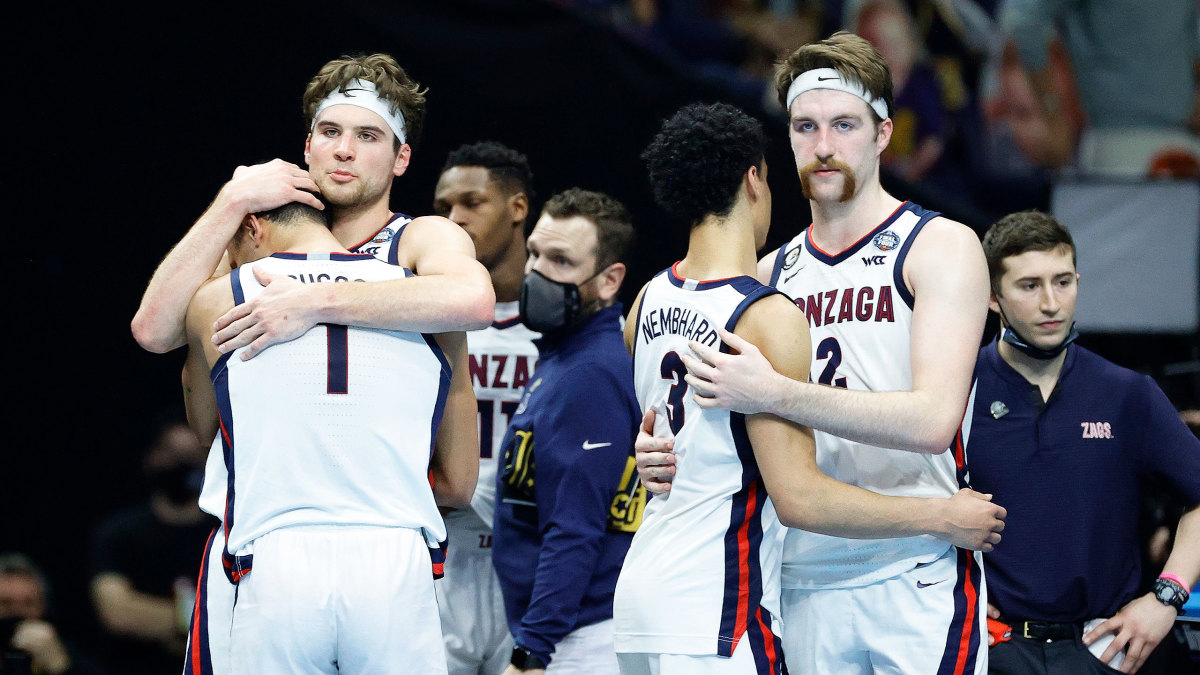
The End came quickly, like an overhand right to the chin of a face turned the other way. Baylor led the NCAA final 9–0, 11–1 and 16–4. Jalen Suggs, the elite recruit that Coach Mark Few landed with frequent visits to Minnesota, the hero of the semifinal with an epic 40-foot-bank shot to topple pesky UCLA, picked up two quick fouls and took a seat on the bench. Sharpshooter Corey Kispert struggled to make shots. Normally fluid Joel Ayayi threw one pass so far out of bounds it might have hit one of the cardboard cutouts. Drew Timme played his worst game of a remarkable tournament. The Zags even went to a zone defense in desperation— and it worked better than anything else on Monday night, closing the halftime gap to 10 manageable points.
The absolute demolition spoke more to Baylor than Gonzaga. Make no mistake about that. The Bears played defense so suffocating it was like they had placed five masks over the faces of their opponents. They knocked down triples as if trying to win a three-point contest. They swatted the Zags' shots and what they didn’t block, they altered. By the break, Few’s face had turned several brighter shades of red (think crimson). By that point, the Bulldogs trailed by the largest deficit ever overcome in men’s NCAA championship game history—and they would not join that club on Monday night, losing 86–70 in the end.
Afterward, over Zoom, Few lauded the Bears, their aggression, their NBA prospects and their absolute bludgeoning of his Zags. He said all the right things, because Few usually says all the right things. “It’s a really, really tough one to end a storybook season on,” he said. “But Baylor, they just beat us.” He wasn’t wrong, and yet, he wasn’t exactly right.
Moments before, inside the losing locker room, while yellow confetti fluttered all over the court at Lucas Oil Stadium, Few sold the same theme to his players. They had nothing to feel bad about, he said. They will look back on this nearly historic season for what it was, he said—strange and glorious and, almost for certain, unlike any they’ll ever experience again. All of that was true. But the part he left out lingered, because it had to linger, because Few has won 754 games as the head coach of Gonzaga but never this one, the final one, the one that would seem to matter most. The defeat that Baylor handed him marked his second title loss since 2017, which isn’t really a bad thing, being thissclose, except for a program that has ascended like the Zags. There’s simply nothing else left to win.
In the aftermath, Few and Kispert both sounded measured, almost relieved, definitely resigned to their first loss in 429 days. Both dismissed any notions of historical heaviness, the idea of an all-time, undefeated, perfect season hanging like a brick over their heads. “Coach said it a million times,” Kispert said. “We never really talked about it. That’s the truth.”
Instead, Gonzaga had attempted to embrace the possibility on Sunday night, when the players gathered in a ballroom at the Indiana Convention Center and saw a clip of a horse paused on a projection screen. There was Secretariat, in 1973, at the Belmont Stakes. The champion’s jockey wore blue-and-white silks, like Gonzaga. And there was Sham, the leading 3-year-old that year, its jockey clad, like Baylor, in yellow-and-green silks. Secretariat, of course, ran the greatest race in the history of horseracing that day, finishing 31 lengths ahead of his closest challenger to complete a Triple Crown bid. After the clip of the horse’s thundering, dominate gallop finished, Travis Knight, the Zags performance coach, told the players to “make your own masterpiece.”
In many ways, this season was that—with a giant smudge centered in the frame, added, unfortunately, on the final night. The 1975–76 Indiana Hoosiers remain the last undefeated team in men’s college basketball. Their streak will extend another season.
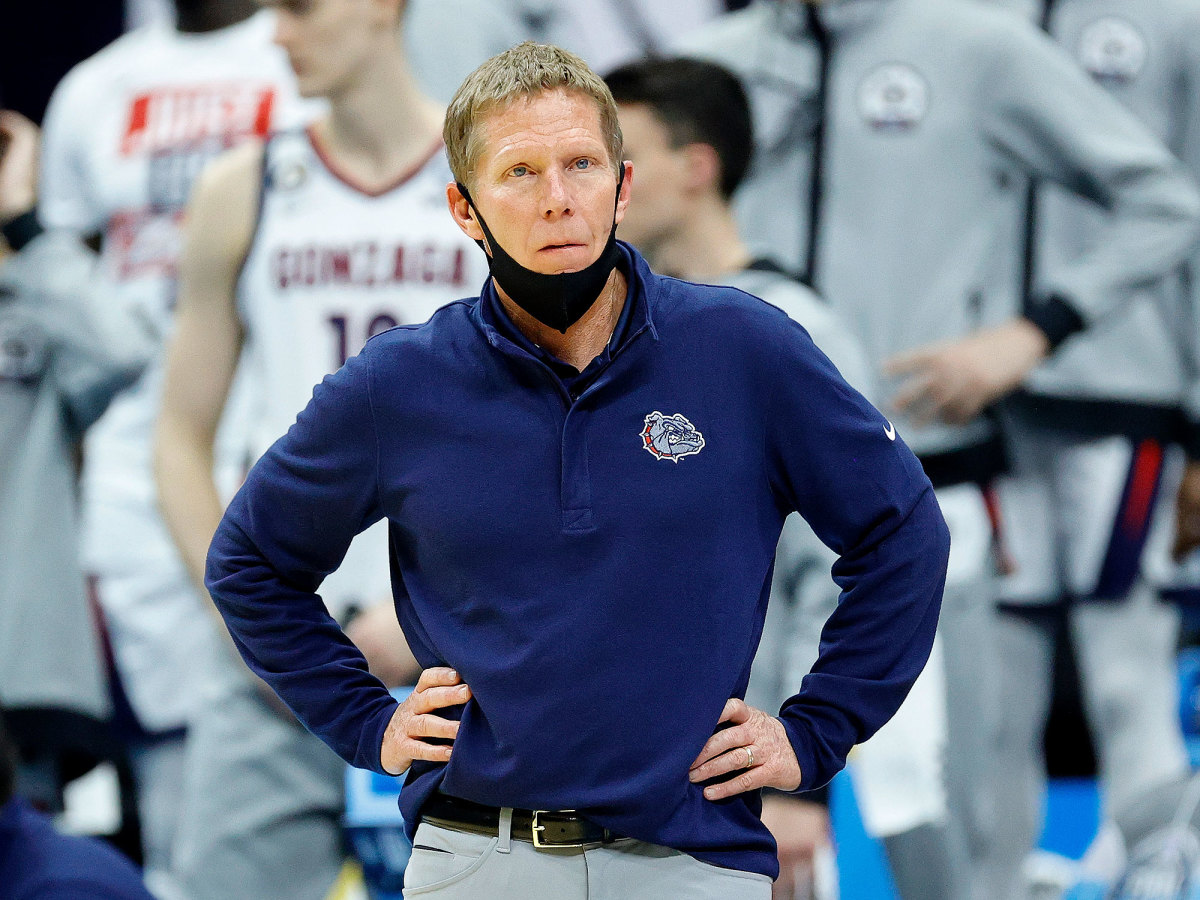
In 22 seasons in charge at Gonzaga, Few never cared much for conventions. So where counterparts may have embraced this pandemic tournament bubble, savoring the extra hours spent in front of screens, analyzing the same tape for the 45th time, Few sought perfection in a different arena—pickleball—to ward off the unrelenting boredom.
Yes, pickleball. The sport that combines tennis, badminton and Ping-Pong and that, more oddly, played a significant role in the Zags’ pandemic tournament. In more normal times Few extends an open invite to all players to drop by and battle the master at his backyard oasis, or he’ll challenge them to games at one of two spots built into the Bulldogs’ practice facility. These being abnormal times, Few talked the NCAA into setting up a court inside the Indiana Convention Center, complete with COVID-19 regulations, a carpeted playing surface, blue painter’s tape laid down for lines, the strangest of doubles partners and brackets that even featured byes. “People don’t realize how stressful it is in there,” says Mike Roth, the Zags' longtime AD.
Naturally Few went undefeated, decompressing by competing. Unnaturally he chose Scott Drew, his title game counterpart, to play with. This marked the NCAA coaching equivalent of a Nadal-Federer doubles partnership.
From paddles to pairings to groundhog existences, the bubble presented a strange backdrop for the most remarkable season. At first 68 teams all wiggled into the same downtown cluster of hotels and the walkways to practice courts inside the convention center, everyone converging like, Few says, “the Virginia City Gold Rush.” (Google insists that Virginia City actually had a silver rush, but still.) As teams lost and then departed, the bubble, like Virginia City, came to resemble a ghost town. “Tumbleweeds blowing through the hallways and nobody for miles,” Few says.
Still, 22 days of hotel confinement, 22 days spent away from families, 22 days of nose swabs and hand sanitizer and overly competitive pickleball still beat the way last season ended. That day, in March 2020, marked Few’s worst at Gonzaga. He stood before his team, the one ranked second nationally, a legit contender for that men’s NCAA tournament. Then he spoke from the heart, unsure of what to say, the message sadly clear: The season had been canceled. Players reacted with sobs and silence, especially the seniors. Few told them not to blame themselves, or fate. But even then his words rang hollow. No, the end didn’t compare to real-world pandemic damage. But his players deserved a chance. Both things were true. They’d earned it. “Golly, we were really in position to make a serious run, too,” he told Sports Illustrated last spring. “How many opportunities like that do you really get?”
At least one more, immediately, it turns out. After that meeting, Few noticed a resilience built into this team, one forged by and in the pandemic. Players followed protocols, isolated. They took classes online and COVID-19 tests daily. They ate meals sitting 10 feet apart. Many, like French guard Ayayi, came from other countries. Most stayed, even when Spokane Arena sat empty on the day of the scheduled NCAA opener. The handful of souls inside could hear a broom sweep and a ventilation system hum. Drivers could pick any one of hundreds of parking spots. One sat in his bus, idling, a paperback cracked open.
For Few, from that point, the pandemic became another unusual-but-fixable problem, only the latest in his tenure. Whether stretching thin resources by sleeping on floors or holding onto his bus seat as the Zags careened toward the edge of a mountain pass en route to an away game, Few doesn’t make Gonzaga into Gonzaga without a hefty helping of innovation and a deep stubbornness to build his way. The 164–13 record in the past five seasons, good for the best winning percentage in men’s college basketball over that stretch, can now be taken for granted—and because of Few, despite his fair, appreciate-the-now laments.
Nothing in this strange year, not the near-unblemished record, nor the logistical nightmares, nor the mental health struggles changed the Bulldogs’ approach. They went at 2020 in the same try-anything, refine-everything way. Throughout the bubble-wrapped 2020–21 season, Few met with Roth daily, even hourly, along with Knight. Some contests, like with Santa Clara, were postponed and rescheduled.
Others, like the anticipated December matchup with Baylor in Indianapolis, would not take place; the blockbuster was canceled 90 minutes before tip-off due to COVID-19 positives. Few and his future pickleball partner rode together to a joint presser, and on the drive back, Drew says they agreed: Playing in the same city four months later in the Final Four “sounds like a better idea.” Or, now, maybe not.
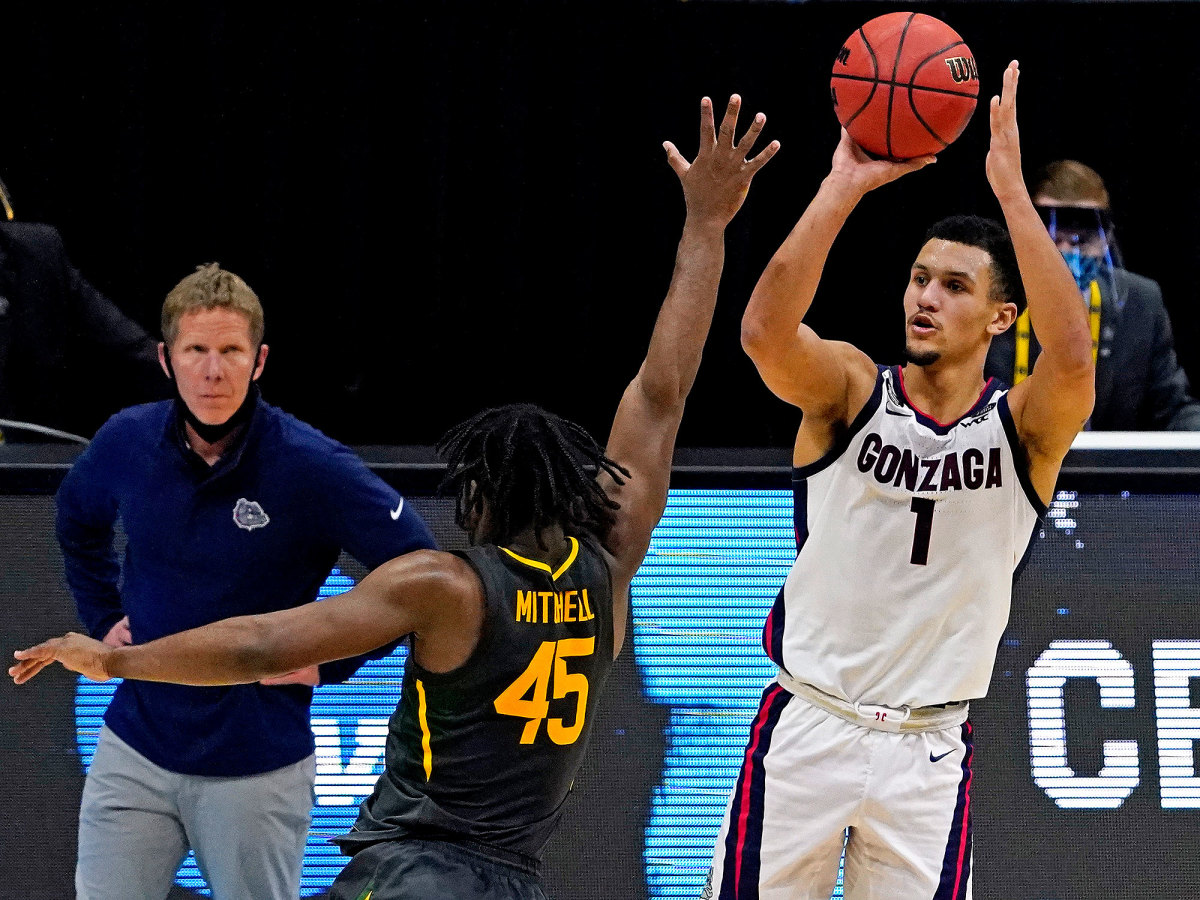
In the weeks before the Final Four, all the comparisons resumed, much to Few’s live-in-the-now chagrin. Yes, Gonzaga played in a “weaker” conference than those long-ago Hoosiers. But the Zags also slayed four nonconference foes in their first seven games that were ranked in the top 20, an NCAA record. Those Hoosiers didn’t have packed transfer portals, one-and-done superstars or this deep a talent pool. But they also didn’t have three-point shots, innovative performance training or modern equipment—and they only lost once in two seasons.
Few spent little time with historical implications. Instead, he deployed his pickleball approach, moving forward, rushing the net. Strength or weakness, he says, reflection isn’t in him. He can appreciate the run, the conference crowns, the NCAA bids. Mostly, he wants Gonzaga to remain relevant every year, because in relevant years, it has championship chances. And Gonzaga had never been more relevant, or more capable, than after a certain high school state champion quarterback who turned down a gridiron scholarship to Ohio State decided to play basketball in Spokane.
He liked Few and the coach’s no-swearing, O’Doul’s-drinking, aw-shucksing alchemy, which had generated decades of success. But to yield gold rather than Virginia City silver, Few needed a superstar-caliber talent: Suggs, who received his first scholarship offer in eighth grade (Georgia Tech) and could have signed an NBA G League deal for six figures last spring, bypassing college altogether.
The prodigy, in an unusual twist, came to Few. Suggs’s AAU coach approached Gonzaga and asked that he be recruited—the NCAA equivalent of Monet’s painting instructor dropping by a museum to inquire about gallery space. Brian Sandifer, from Grassroots Sizzle in Minnesota, spent one night entranced by the Zags during Suggs’s sophomore year. He called Jalen’s father, Larry, and they agreed: Jalen would fit perfectly.
Sandifer eventually landed a phone call with Few, who conveyed a blunt assessment. “If you just want an offer, want to go on social media, I don’t want to deal with it,” Few says. “If we have a legitimate shot at getting him, you’ve got to be honest with me.” They did, Sandifer clarified, while adding that Few himself would need to cultivate that relationship rather than delegate. “Next thing, Few started coming on a regular basis on his private jet,” Sandifer says. “Anytime he was free.” Larry Suggs says Few showed up at five straight games to close the recruitment.
Despite his football ability, Suggs saw basketball in his future and Gonzaga in his present. The key, for both parties, wasn’t just the guard’s immense talent. Suggs fit the Zags’ emphasis on competition, family and culture; he combined five-star fanfare with an underdog ethos, same as his chosen school. He probably led the team in floor burns. “Jalen’s all about winning,” Few says, in summation.
Even then, Suggs couldn’t win a title alone. The Zags needed another guard to pair with him, and the same coaches who had convinced Andrew Nembhard to transfer in from Florida and sit out this season while the wunderkind ran point, ultimately changed their minds. Nembhard meshed seamlessly. The Bulldogs needed to file an immediate eligibility waiver with the NCAA, but first, Few wanted Suggs’s opinion since he would be ceding control of the offense. Suggs grinned, his face a snapshot that Few says he’ll remember forever. “Are you kidding me?” Suggs asks. “That would be awesome.”
“Real players,” Few says, “don’t fear anybody.” Least of all those who take 40-foot bank shots to reach the NCAA final.
After Nembhard moved into the starting lineup, Few told his assistants they were coaching a top-five team rather than a top-25 one. Everything blended so well, the potential obvious in practice. Few had Suggs, Nembhard and Ayayi, the athletic wing from France, underappreciated and overlooked but the player Suggs calls Gonzaga’s “motor.” The coach also had Timme, a big with a deft passing touch and an endless supply of both post moves and mustachioed celebrations after dunks. (With Adam Morrison, Roth and now Timme, Gonzaga has also become Mustache U.) Megan Timme, Drew’s mom, wishes her son would apply razor to face. But she’s also not one to mess with the mojo of an unbeaten season. “I can handle it,” she says.
The sophomore from Dallas took official visits to Gonzaga, Alabama, Illinois and Arizona—and loved them all. But his family had decided not to make any decision within 48 hours of any one trip, squashing recency bias in favor of rational evaluations. Timme went with Gonzaga, his first tour stop. “He tried to find a reason not to like it because it was so far away,” his mom says. “But he could be a regular guy there, stay in the dorms, eat with [students].”
Timme possessed skill and unselfishness, like Suggs, but cloaked his cutthroat mentality beneath that goofy exterior. “All the facial hair and laughing and goofing around aside, he’s a dog,” says Kispert, paying the highest of Gonzaga compliments.
Then, there’s Kispert himself, the Zag-iest of all Zags. The four-year forward talks like his coach, leads like his coach and projects all of the program’s values—except that he refuses Few’s pickleball invites, in order to preserve pride. “An old-school Bulldog,” says Casey Calvary, a OG Gonzaga Cinderella member from the 1998–99 Elite Eight team. Calvary echoes his old coach in saying there’s more to Kispert than his 1,588 points scored or his 120 games won; like Few, he’s a culture creator, a nurturer, the chief program staple who can convey what Gonzaga men’s basketball has become as well or better than the staff. Few, when asked if he considers Kispert the ultimate Few player, recoils at the perceived understatement of the question.
“He’d be the ultimate player for Nick Saban,” Few gushes. “You could name the biggest a-hole in America, and he’d be great for him. Or the nicest coach in the world. He’s the walking poster child of college athletics.”
If anything, Kispert admits he spent too many days in previous seasons living in his own head, elevating into higher levels of pressure, believing that thousands of practice shots would net a near-perfect shooting percentage. But last summer he continued tinkering with his mechanics and worked on his perfectionist issues so that Gonzaga, with Mr. Lottery Pick, Mr. Too Good Not to Play, Mr. Glue, Mr. ’Stache and Mr. Zag, could embark on an almost perfect season.
The Zags started off ranked No. 1, mowed down Kansas in the opener, barnstormed through that ruthless nonconference slate and toppled West Virginia in Indianapolis, site of the Final Four, by five points on Dec. 2. This marked the last time the Bulldogs would win merely by single digits for three months.
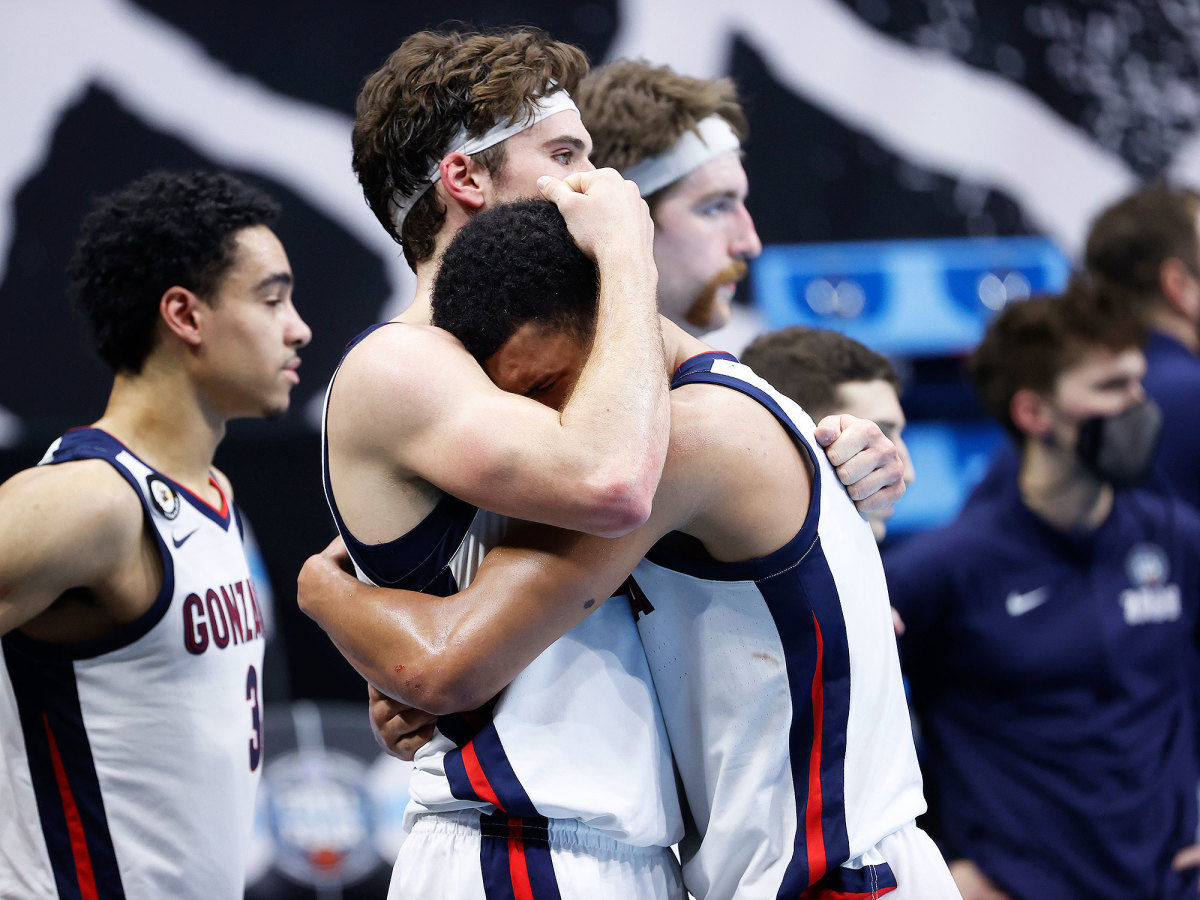
The making of the almost perfect season continued apace, despite an unexpected blockade in early March. WCC rival BYU—the last team to beat Gonzaga, before the cancellation of last season—went up by 14 points in the conference tournament final. The Zags would embark on a rare ’21 comeback, win by 10 and receive a necessary message before the NCAAs. Don’t coast. “We loved it,” Timme says.
Then, the tournament that truly mattered started, the one that had long defined Gonzaga in contrasting ways, success and failure intertwined each March, just at varying levels. The Zags obliterated Norfolk State, Oklahoma, Creighton and USC by a combined 96 points, never leading by fewer than nine in the second half. They showcased their versatility, with different players assuming lead roles each game. Kispert sank six of nine triples against Norfolk, Nembhard dissected Creighton with poetic passing and Suggs made remember-them-forever plays against USC. But Timme, his mustache and his flexed biceps for celebrations remained the primary Bulldogs force. He dropped 30 on the Sooners, then played possessed against the Trojans.
Only one game—against a No. 11 seed—stood between Gonzaga and Baylor’s finally clashing, just as their coaches had wished for in that car. The Zags’ semifinal opponent, UCLA, barely squeezed into the NCAA field, losing four straight before the Big Dance. The Bruins needed overtime to survive Michigan State in the First Four and required another extra period to dispatch No. 2 seed Alabama. They scored all of 51 points against top-seeded Michigan in the Elite Eight, stacking brick after brick. Meanwhile, Gonzaga averaged 91.6 points this season, pushing the betting spread for Zags-Bruins to 13.5, the highest ever for a men’s Final Four meeting.
The expected beatdown never happened. Instead, the power-turned-underdog Bruins and the underdog-turned-power Zags left their histories and current records back in the bubble and engaged in one of the greatest games in the annals of the most thrilling tournament in sports. The thriller even featured strong Kentucky-Duke 1992 vibes. The season-long No. 1 team stalking history could not put away the unlikely challenger dressed in blue(blood) clothing. At no point did either team lead by more than seven, and the longer the taut duel went on, the more the pressure mounted on the undefeated team.
The Bruins, playing free and easy, made an endless succession of midrange jump shots. The Zags countered with all their arsenal: transition buckets from Ayayi, pivots into contortionist scores from Timme down low, Nembhard’s expertly run pick-and-rolls. In that long-ago game between the Blue Devils and Wildcats, the teams combined for 47 assists on 71 made baskets; in this one, the Bruins and Bulldogs combined for the exact same numbers.
Still, to complete the comparison, the 2021 classic needed a legendary shot. Enter—who else?—Suggs. After UCLA’s Johnny Juzang, the tournament wizard who managed 29 points against the Zags, put back his own miss to tie the game at 90, he had seemed to provide a willing audience with a second OT. Kispert took the ball out of the net with 3.3 seconds left and quickly tossed a pass to Gonzaga’s most gifted athlete. Few did not take the timeout he had available. No need. Suggs had the basketball in his hands, Kobe Bryant on his brain and sports history in his sights.
“I knew he was going to get a great shot,” says Larry, who watched from the Gonzaga fan section. Dad expected four dribbles, but his son needed only three to flash past half court and elevate with his feet oddly positioned. Guard David Singleton raised both arms to contest, but Suggs rose higher, as Few, Larry and an international audience looked on from varying vantage points. “That last second,” Dad says, “it seemed like he was hanging in the air forever.”
The shot traced a promising arc toward the hoop. The backboard glowed orange, signaling the expiration of the game clock. Larry watched his son land and take several steps toward the Gonzaga fans. Ball hit backboard, then found net, and immortality arrived with a stunning rush. Jalen Suggs did not call bank; he called game. Then he leapt atop a sideline table and mimicked a Mamba celebration. Here was Christian Laettner (last-second shot from improbable angle), Kris Jenkins (made in the Final Four) and Michael Jordan (echoes of the Craig Ehlo NBA Finals celebration) wrapped into one moment—the exact scenario that every kid dreams of shooting hoops in their driveway growing up.
Best shot in Gonzaga history? Duh, says Calvary, who tipped in the other candidate, an ugly buzzer beater, arms flailing forward to knock the ball in, against Florida in the 1999 Sweet 16. Better? “For sure! And twice as graceful,” Calvary wrote in a text, adding that he ran screaming down the concourse at Lucas Oil and didn’t sleep that Saturday night in celebration.
For Morrison and amateur Zags historians, this one night, this epic triumph, this indelible moment, combined with this strange season and perfect record, nearly closed the loop on the program’s circular evolution. Gonzaga stood both far away from its unrecognizable past and yet tied forever to its history, made better, made almost champions, because of every step from ’99 to now.
Of course, as Morrison settled into his courtside seat for the team’s radio broadcast, he thought back to 2006, his unfortunately named Crying Game, when UCLA upset Gonzaga in the Sweet 16 and the tears flowed for the Zags’ star. Not only did the Suggs lessen the sting and replace the definitive memory between the teams, but Morrison called the moment, live and in person at Lucas Oil, adding to his to Gonzaga lore without hoisting a jumper. “Yes!!!” he screamed, the emotion so palpable it will induce goosebumps for decades. “WOW!!!”
And yet, what most stood out to Morrison about that UCLA game was how Suggs had all but completed the program’s evolution. It wasn’t just The Shot. It was also The Sequence, when late in the second half, Suggs blocked a layup from behind, grabbed the ball and whistled a bounce pass almost the length of the court, among three defenders and with an ungodly amount of spin—to Timme, for another dunk/mustache celebration. In those four seconds, Morrison saw the talent that made Suggs the best recruit in program history and he saw that Suggs had completely absorbed the GU tao .
“That’s what makes Gonzaga so unique,” Morrison says, noting that Suggs’s season/tournament make a strong case for elite prospects to choose college basketball stardom over G League bank accounts.
As Saturday became Easter Sunday, the Zags retreated to the ballroom at the convention center for a late-night meal of salad and chicken. Less than 48 hours remained before they’d wrestle Baylor for that ever-elusive title. As Roth answered dozens of text messages, he noticed other phones in the room buzzing, over and over, from all corners—playing Morrison’s legendary call. With more than three decades at the basketball power in eastern Washington, the athletic director volunteered for bubble duty; he would miss his family but not the perfect season. “I want to go home,” he says the day before the title game, “but I want to go home with some hardware.”
The Zags needed only to close the loop, finally, on both their history and college basketball’s list of most special seasons. Only one thing remained, after two decades done Few’s way: They needed to win the whole damn thing.
Roth also noticed Few late that night, the son of a pastor, the avid fly fisherman, lingering in the corner of a ballroom. While his players celebrated, he did not. Instead, he huddled with Knight, the performance coach, making preparations. “That’s one thing that will never change,” Roth said, chuckling at the scene. “He’ll never be satisfied, right?”
He pauses, as if searching for the right words. “This is what makes (us) special,” Roth says. “Never satisfied.” And pickleball courts.
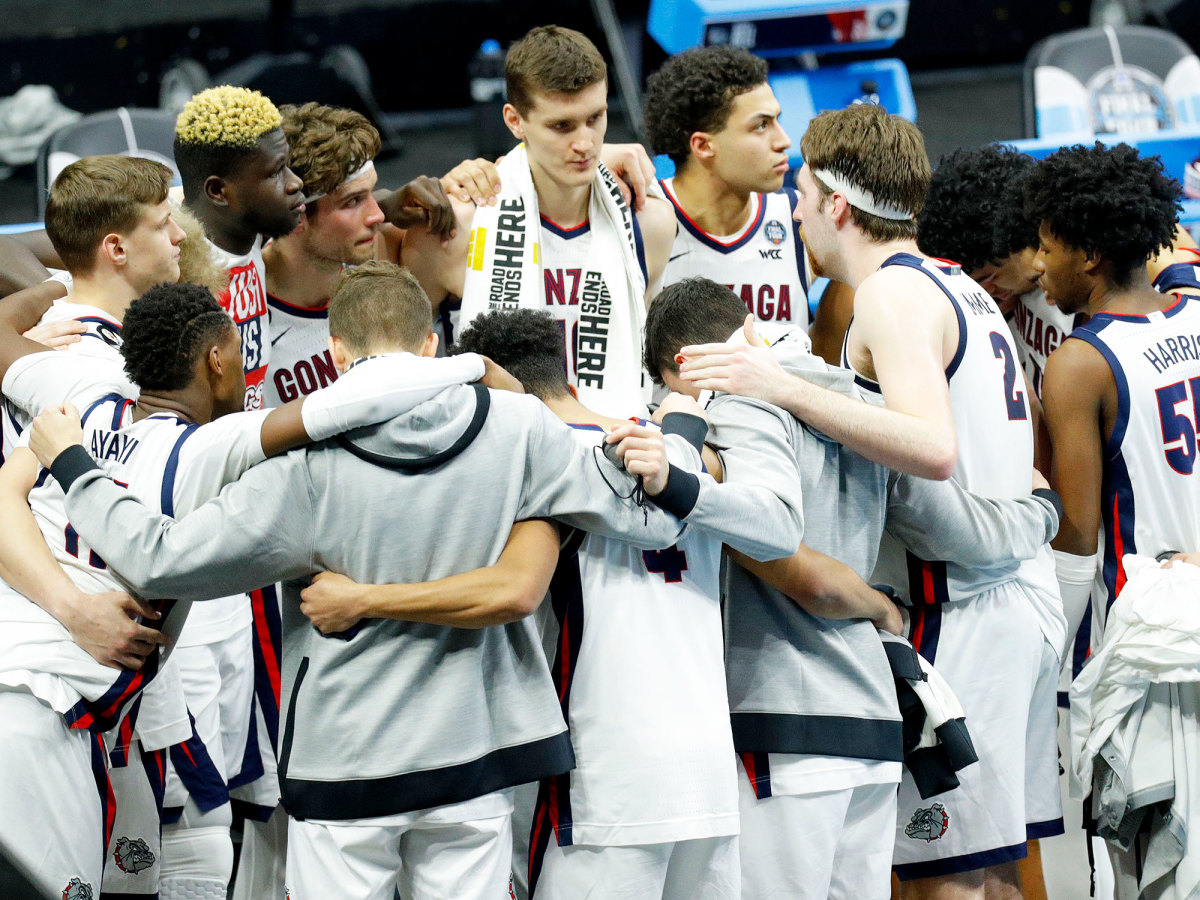
Of course, it’s both fair and not fair at all to consider next season on the same night that Gonzaga lost its second final in four seasons (not counting the COVID-19-canceled one). Few will, naturally. For starters, the Zags boast enviable depth, players capable of starting for other programs who hardly cracked this season’s rotation. They also appear poised to land Chet Holmgren, a 7' 1" center with guard-like skills, the nation’s top recruit and Suggs’s high school teammate. (Imagine those teams!) “He’s Kevin Durant Jr., basically,” Morrison says with a laugh. Plus, five-star combo guard Hunter Sallis already verbally committed to the Zags. Maybe Timme will stay another year. Maybe Ayayi will, too. Maybe both will bolt for the NBA, joining Kispert and Suggs. Whatever the scenario, the Zags could be favored heading into next season regardless.
“We’re an accomplished blueblood,” Roth says. “And with that comes the expectation that we’re going to be in this position, or have the potential to be in this position, year after year. It’s the philosophy we’ve had for 24 years. Never be satisfied.”
Especially not Monday, especially after their first loss in 429 days, especially not after a defeat that lopsided in front of the world. The emotion from Saturday’s magic did not carry over. Perhaps the toll of a longer pandemic season, plus the history they had come so close to making, did. Neither Few nor Kispert would make excuses. They didn’t need to. They already had a masterpiece and, eventually, maybe a long, long time from now, they can at least care a little less about the smudge.
